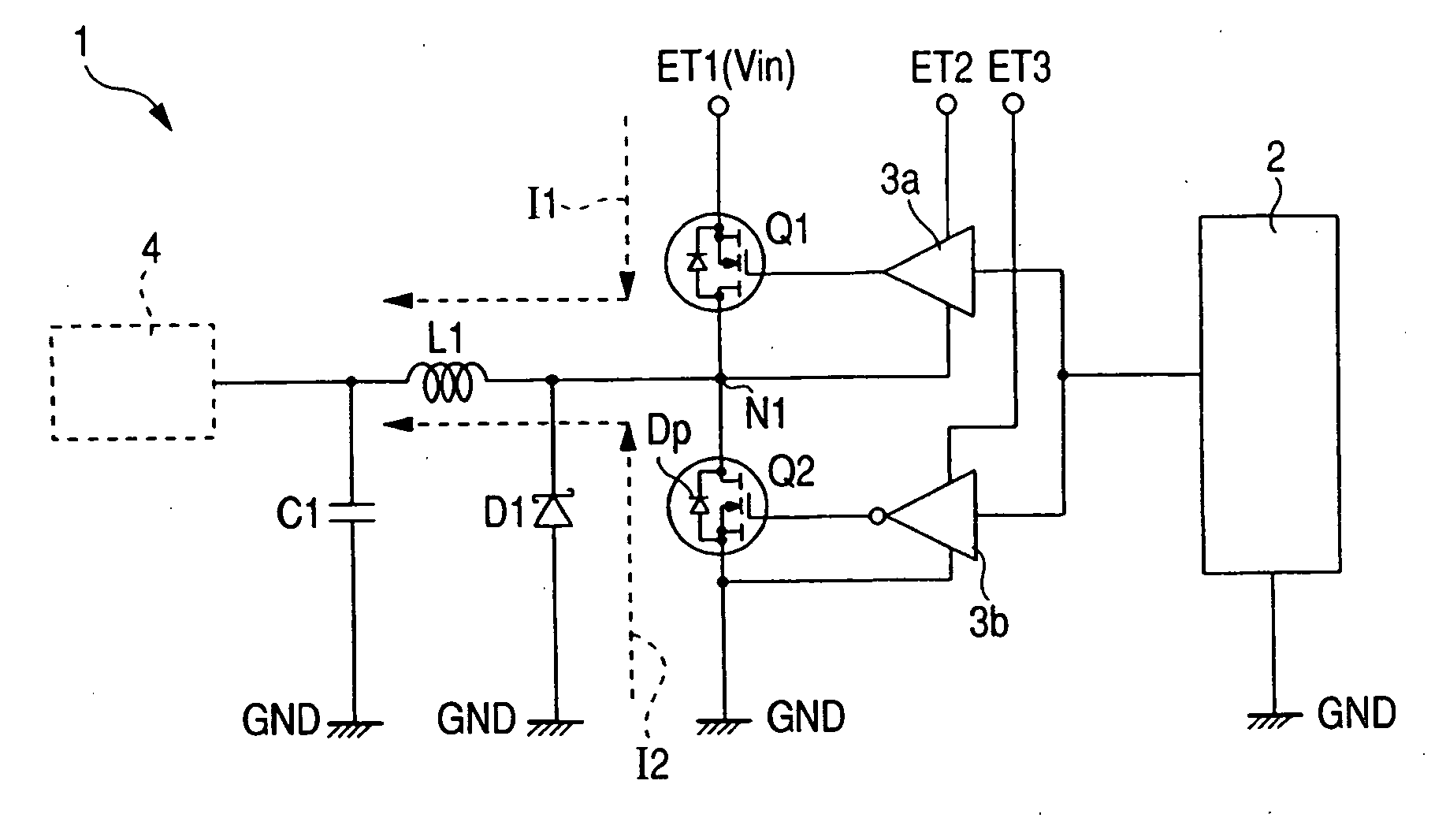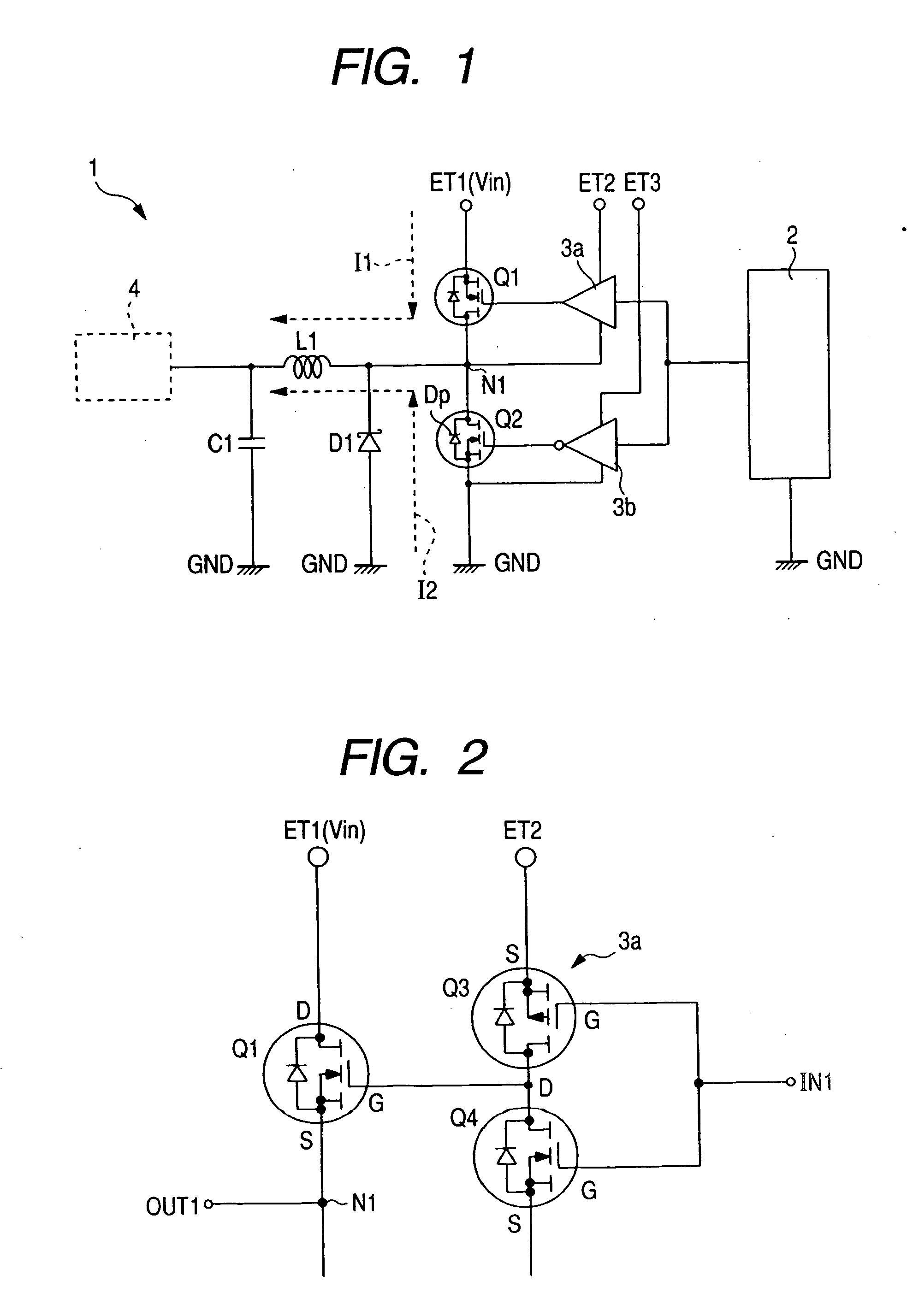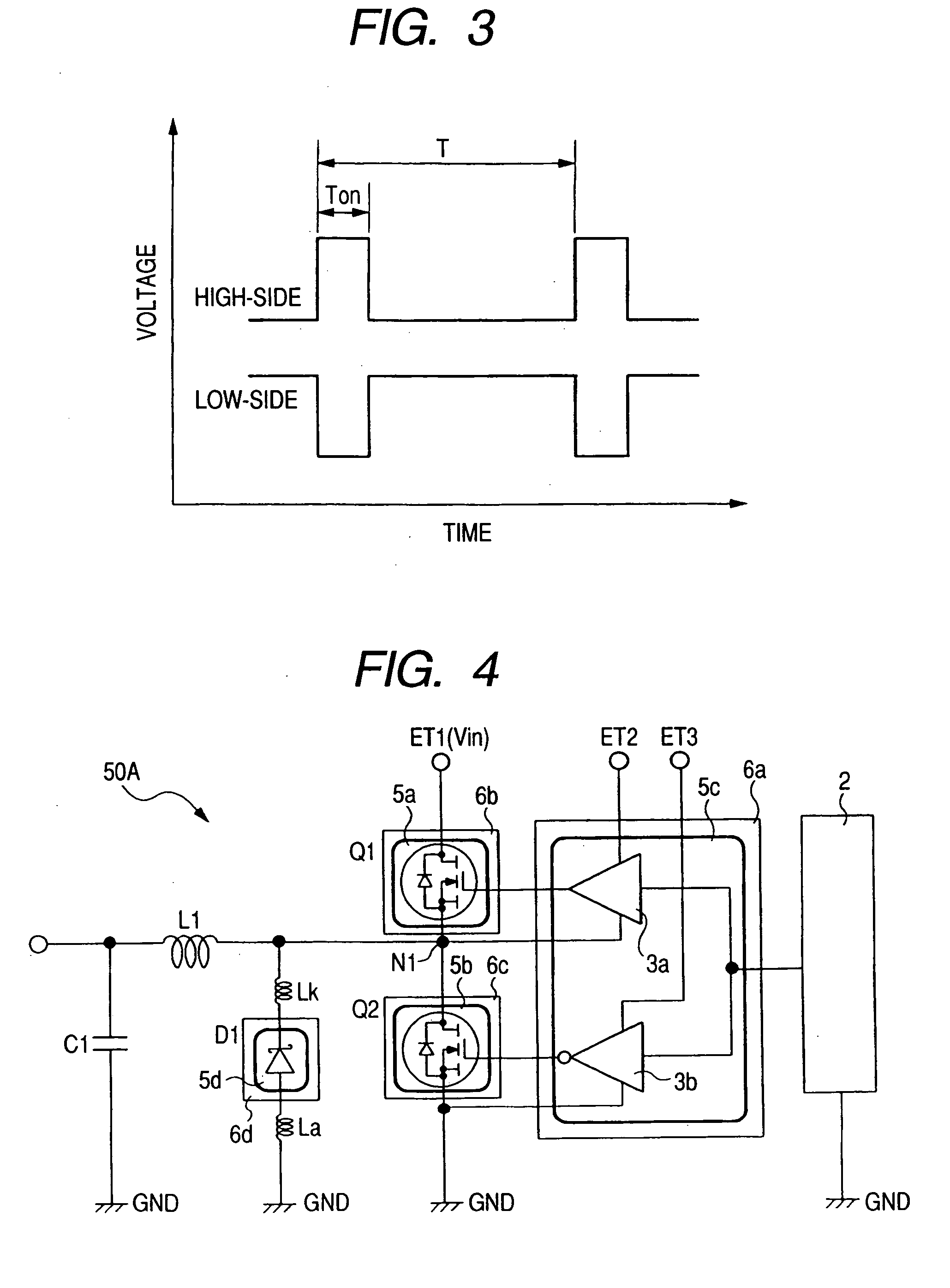Semiconductor device
a technology of schottky barrier and semiconductor, which is applied in the direction of electric variable regulation, process and machine control, instruments, etc., can solve the problems of reducing unable to achieve sufficient effect, and commutating the load current to the schottky barrier diode, so as to reduce the inductance of the wiring section, reduce the diode conduction loss and the effect of diode recovery loss
- Summary
- Abstract
- Description
- Claims
- Application Information
AI Technical Summary
Benefits of technology
Problems solved by technology
Method used
Image
Examples
first preferred embodiment
[0073] A semiconductor device according to a first embodiment of the present invention operates as a non-insulated DC-DC converter of the type used in a power supply circuit of an electronic apparatus like, for example, a desk top personal computer, a notebook-size personal computer, a server or a game machine or the like. FIG. 1 shows one example of a circuit diagram of the non-insulated DC-DC converter 1. The non-insulated DC-DC converter 1 includes a control circuit 2, driver circuits (first and second control circuits) 3a and 3b, power MOSs (first and second field effect transistors) Q1 and Q2, a Schottky barrier diode (first diode) D1, a coil L1 and a capacitor C1, etc.
[0074] The control circuit 2 is a circuit which supplies a signal for controlling the voltage switch-on widths (on time) of the power MOSs Q1 and Q2. The control circuit 2 is packaged aside from the power MOSs Q1 and Q2. The output (corresponding to a terminal for the control signal) of the control circuit 2 is ...
second preferred embodiment
[0145]FIG. 31 is a plan view showing an example of a package 6 according to a second embodiment, FIG. 32 is a plan view showing an example of the package 6 except for metal plate wirings of FIG. 31, FIG. 33 is a cross-sectional view taken along line Y3-Y3 of FIG. 31, and FIG. 34 is a cross-sectional view taken along line X3-X3 of FIG. 31. Incidentally, FIGS. 31 and 32 also show a sealing member MB as seen therethrough to make it easy to see the elements in the drawings. Further, die pads 7a1 and 7a2, leads 7b and a wiring section 7c are given hatching.
[0146] In the second embodiment, some of wirings for electrically connecting pads and respective portions are configured as metal plate wirings 36 in place of wires. That is, pads BP1 for a source electrode of a power MOS Q1 of a semiconductor chip 5a are electrically connected to a die pad 7a2 through one metal plate wiring 36. A BP5 for a source electrode of a power MOS Q2 of a semiconductor chip 5b is electrically connected to lead...
third preferred embodiment
[0151]FIG. 35 is a plan view showing a top surface of a package 6 according to a third embodiment, and FIGS. 36 and 37 are, respectively, cross-sectional views taken along line Y4-Y4 of FIG. 35 and line X4-X4 thereof. Incidentally, the arrangement of the inside of the package 6 is identical to that shown in FIG. 31. In FIG. 35, the top surface of the package 6 is given hatching to make it easy to see in the drawing. The top surface of the package 6 corresponds to a surface lying on the side opposite to a mounting surface (surface opposite to a wiring board) of the package 6.
[0152] In the third embodiment, the pads and respective portions are connected by metal plate wirings 36 in a manner similar to the second embodiment. However, some of the metal plate wirings 36 are exposed from a resin molded body MB. The metal plate wirings 36 are disposed so as to cover regions for forming power MOSs Q1 and Q2 corresponding to heat generation sources of semiconductor chips 5a and 5b. The pres...
PUM
 Login to View More
Login to View More Abstract
Description
Claims
Application Information
 Login to View More
Login to View More - R&D
- Intellectual Property
- Life Sciences
- Materials
- Tech Scout
- Unparalleled Data Quality
- Higher Quality Content
- 60% Fewer Hallucinations
Browse by: Latest US Patents, China's latest patents, Technical Efficacy Thesaurus, Application Domain, Technology Topic, Popular Technical Reports.
© 2025 PatSnap. All rights reserved.Legal|Privacy policy|Modern Slavery Act Transparency Statement|Sitemap|About US| Contact US: help@patsnap.com



